|
|
General: REVELATION/R-EVE-LATION 911 APOLLYON/APOLLO/NAPOLEON MADELEINE PARIS FRANCE
Elegir otro panel de mensajes |
|
|
  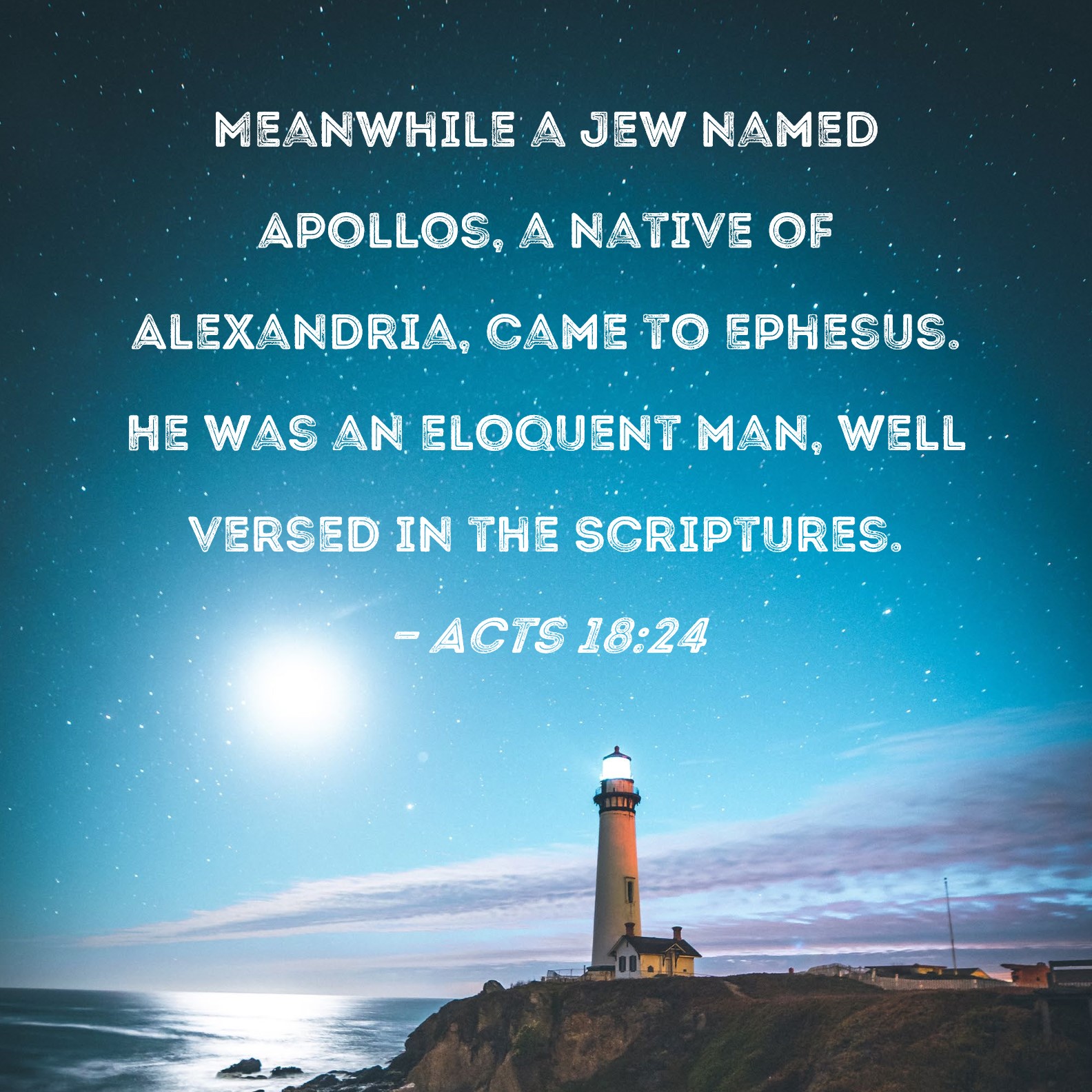 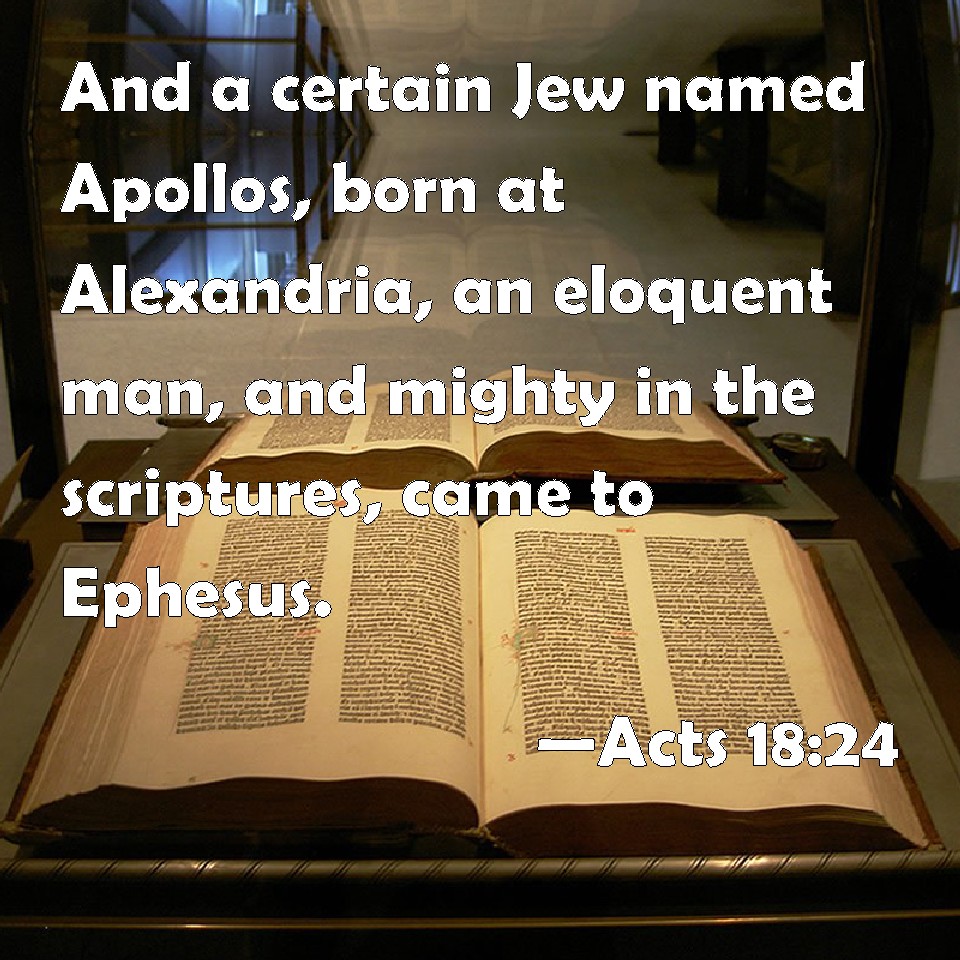
New International VersionMeanwhile a Jew named Apollos, a native of Alexandria, came to Ephesus. He was a learned man, with a thorough knowledge of the Scriptures.
New Living TranslationMeanwhile, a Jew named Apollos, an eloquent speaker who knew the Scriptures well, had arrived in Ephesus from Alexandria in Egypt.
English Standard VersionNow a Jew named Apollos, a native of Alexandria, came to Ephesus. He was an eloquent man, competent in the Scriptures.
Berean Standard BibleMeanwhile a Jew named Apollos, a native of Alexandria, came to Ephesus. He was an eloquent man, well versed in the Scriptures.
Berean Literal BibleNow a certain Jew named Apollos, a native of Alexandria, came to Ephesus, being an eloquent man, mighty in the Scriptures.
King James BibleAnd a certain Jew named Apollos, born at Alexandria, an eloquent man, and mighty in the scriptures, came to Ephesus.
New King James VersionNow a certain Jew named Apollos, born at Alexandria, an eloquent man and mighty in the Scriptures, came to Ephesus.
New American Standard BibleNow a Jew named Apollos, an Alexandrian by birth, an eloquent man, came to Ephesus; and he was proficient in the Scriptures.
NASB 1995Now a Jew named Apollos, an Alexandrian by birth, an eloquent man, came to Ephesus; and he was mighty in the Scriptures.
NASB 1977Now a certain Jew named Apollos, an Alexandrian by birth, an eloquent man, came to Ephesus; and he was mighty in the Scriptures.
Legacy Standard BibleNow a Jew named Apollos, an Alexandrian by birth, an eloquent man, arrived at Ephesus; and he was mighty in the Scriptures.
Amplified BibleNow a Jew named Apollos, a native of Alexandria, came to Ephesus. He was an eloquent and cultured man, and well versed in the [Hebrew] Scriptures.
Christian Standard BibleNow a Jew named Apollos, a native Alexandrian, an eloquent man who was competent in the use of the Scriptures, arrived in Ephesus.
Holman Christian Standard BibleA Jew named Apollos, a native Alexandrian, an eloquent man who was powerful in the use of the Scriptures, arrived in Ephesus.
American Standard VersionNow a certain Jew named Apollos, an Alexandrian by race, an eloquent man, came to Ephesus; and he was mighty in the scriptures.
Contemporary English VersionA Jewish man named Apollos came to Ephesus. Apollos had been born in the city of Alexandria. He was a very good speaker and knew a lot about the Scriptures.
English Revised VersionNow a certain Jew named Apollos, an Alexandrian by race, a learned man, came to Ephesus; and he was mighty in the scriptures.
GOD'S WORD® TranslationA Jew named Apollos, who had been born in Alexandria, arrived in the city of Ephesus. He was an eloquent speaker and knew how to use the Scriptures in a powerful way.
Good News TranslationAt that time a Jew named Apollos, who had been born in Alexandria, came to Ephesus. He was an eloquent speaker and had a thorough knowledge of the Scriptures.
International Standard VersionMeanwhile, a Jew named Apollos arrived in Ephesus. He was a native of Alexandria, an eloquent man, and well versed in the Scriptures.
Majority Standard BibleMeanwhile a Jew named Apollos, a native of Alexandria, came to Ephesus. He was an eloquent man, well versed in the Scriptures.
NET BibleNow a Jew named Apollos, a native of Alexandria, arrived in Ephesus. He was an eloquent speaker, well-versed in the scriptures.
New Heart English BibleNow a certain Jew named Apollos, an Alexandrian by race, an eloquent man, came to Ephesus. He was mighty in the Scriptures.
Webster's Bible TranslationAnd a certain Jew named Apollos, born at Alexandria, an eloquent man, and mighty in the scriptures, came to Ephesus.
Weymouth New TestamentMeanwhile a Jew named Apollos came to Ephesus. He was a native of Alexandria, a man of great learning and well versed in the Scriptures.
World English BibleNow a certain Jew named Apollos, an Alexandrian by race, an eloquent man, came to Ephesus. He was mighty in the Scriptures.
Literal Translations
Literal Standard VersionAnd a certain Jew, Apollos by name, an Alexandrian by birth, a man of eloquence, being mighty in the Writings, came to Ephesus;
Berean Literal BibleNow a certain Jew named Apollos, a native of Alexandria, came to Ephesus, being an eloquent man, mighty in the Scriptures.
Young's Literal TranslationAnd a certain Jew, Apollos by name, an Alexandrian by birth, a man of eloquence, being mighty in the Writings, came to Ephesus,
Smith's Literal TranslationAnd a certain Jew, Apollos by name, an Alexandrian by birth, an eloquent man, arrived at Ephesus, being able in the writings.
Catholic Translations
Douay-Rheims BibleNow a certain Jew, named Apollo, born at Alexandria, an eloquent man, came to Ephesus, one mighty in the scriptures.
Catholic Public Domain VersionNow a certain Jew named Apollo, born at Alexandria, an eloquent man who was powerful with the Scriptures, arrived at Ephesus.
New American BibleA Jew named Apollos, a native of Alexandria, an eloquent speaker, arrived in Ephesus. He was an authority on the scriptures.
New Revised Standard VersionNow there came to Ephesus a Jew named Apollos, a native of Alexandria. He was an eloquent man, well-versed in the scriptures.
Translations from Aramaic
Lamsa BibleAnd a certain Jew named A-pol’los, a native of Al-ex-an’dri-a, an eloquent man and well versed in the scriptures, came to Eph'esus.
Aramaic Bible in Plain EnglishOne man, a Jew whose name was Apollo, a native of Alexandria and instructed in the word, was familiar with the Scriptures and he came to Ephesaus.
NT Translations
Anderson New TestamentAnd a certain Jew, named Apollos, an Alexandrian by birth, an eloquent man, and mighty in the Scriptures, came to Ephesus.
Godbey New TestamentAnd a certain Jew, Apollos by name, an Alexandrian by race, an eloquent man, came into Ephesus, being mighty in the scriptures.
Haweis New TestamentNow a certain Jew named Apollos, an Alexandrian by birth, a man of eloquence, who was powerful in the Scriptures, had come to Ephesus.
Mace New TestamentIn the mean time a Jew, nam'd Apollos, born at Alexandria, a man of letters, and vers'd in the scriptures, arriv'd at Ephesus.
Weymouth New TestamentMeanwhile a Jew named Apollos came to Ephesus. He was a native of Alexandria, a man of great learning and well versed in the Scriptures.
Worrell New TestamentNow a certain Jew, Apollos by name, an Alexandrian by birth, a learned man, came down to Ephesus; and he was mighty in the Scriptures.
Worsley New TestamentNow there came to Ephesus a certain Jew named Apollos, an Alexandrian by birth, an eloquent man, and mighty in the scriptures.
|
|
|
|
|
|
“’Out Of The Past' was the name of the store, and its products consisted of memories: what was prosaic and even vulgar to one generation had been transmuted by the mere passing of years to a status at once magical and also camp.”
This wonderful time-travel film, written and directed by Woody Allen was a virtual who’s who. Not only in the actors, but also in the artistic characters of the past.
Gil Pender (Owen Wilson) is engaged to Inez (Rachel McAdams). This is the third time-travel story I have blogged about staring Rachel McAdams, but the first time this adorable actress was not a likable character
Gil was a failed Hollywood scriptwriter who was working on his novel. He was a dreamer and found inspiration in Paris, especially in the rain. Inez did not relate to this and would never let herself get wet or live in the French city. Gil believed in soulmates. Inez thought it was a ridiculous notion. She did not respect anything Gil liked. In fact, she was more taken with her friend, Paul (Michael Sheen), who is also visiting along with his wife Carol (Nina Arianda). Paul is a pretentious snob, know-it-all.
One night, Gil decides he’s had enough of hanging around with Inez’s friends and decides to walk back to his hotel. He gets lost on the streets of Paris and sits down on some steps. The bells of a clock ring out midnight. Suddenly a vintage 1920’s Peugeot taxi pulls up and the people inside beckon him to go with them to a party.
He ends up at a party in 1920’s Paris where he meets notable American novelists, Zelda (Alison Pill) and F. Scott Fitzgerald (Tom Hiddleston). The Fitzgeralds are friendly and partiers, especially Zelda.
Gil is also taken by the piano player/singer who he comes to find out is none other than Cole Porter (Yves Heck) doing his famous song, Let’s Do it.

“Birds do it, bees do it
Even educated fleas do it
Let's do it, let's fall in love”
“Romantic sponges, they say, do it
Oysters, down in oyster bay, do it
Let's do it, let's fall in love”
To make a long, great story short, Gil ends up meeting many famous people who found it vogue to hone their crafts in the Parisian city in the Roaring Twenties. He asks Ernest Hemingway (Corey Stoll) to review his book, which is refused, so Hemingway offers to bring it to Gertrude Stein (Kathy Bates) who reads it and likes it. There, Gil meets Pablo Picasso (Marcial Di Fonzo Bo) and his mistress, Adriana (Marion Cotillard). Gil starts to fall for Adriana and continues to travel back to the ‘20s to date her.
Meanwhile, Gil is still engaged to Inez in the present day, who is more and more infatuated with Paul. In one scene she shushes Gil so that Paul can speak. Hemingway makes Gil wonder why he is even still engaged to Inez.
Another aspect of Gil’s life Inez could not relate to was his love of antiques and nostalgia. On one trip with Inez and her friends, Gil walks over to a French female vendor playing Cole Porter on an antique Gramophone. Her name was Gabrielle (Léa Seydoux) He was impressed with her knowledge of things and music of the past.
Gil continues his Midnight strolls to the 1920s and dating Adriana. Gil believes this is the Golden Era, but Adriana, who lives in it believes the 1890s was the Golden Era. This film has time-travel within time-travel as a horse-drawn buggy comes along and transports them to the Gay Nineties. They go to the Moulin Rouge where they meet Henri de Toulouse-Lautrec, Paul Gauguin, and Edgar Degas. (Vincent Menjou Cortes, Olivier Rabourdin, and François Rostain) However, these three believe the Renaissance era was the Golden Age. Gil ends up having an epiphany and realizes that despite the allure of nostalgia, any time can eventually become a dull "present", so it's best to embrace your actual present. Adriana however, elects to stay in the 1890s, and they part ways.
Other notable people Gil meets:
Josephine Baker (Sonia Rolland)
Salvador Dalí (Adrien Brody)
T. S. Eliot (David Lowe)
Henri Matisse (Yves-Antoine Spoto)
Leo Stein (Laurent Claret)
Spoiler:
Back in the present day, Inez admits to Gil that she slept with Paul, but dismisses it as meaningless. Gil leaves her and stays in Paris.
One night as Gil is walking around, he runs into Gabrielle, the antique vendor. She tells Gil she was thinking about him when a new set of Cole Porter records came in. It starts to rain and Gil acts concerned for her. But she tells him, it’s ok, she likes the rain. He asks to walk her home. It appeared Gabrielle was Gil’s true soulmate.
This is a wonderful film for those who love time-travel, France, classic literary figures, and artists.
The casting was brilliant, especially of the historical figures.

Salvador Dalí (Adrien Brody)
https://www.timepilgrims.com/blog/midnight-in-paris-time-travel-film |
|
|
|
|
Batalla de las Pirámides
La batalla de las Pirámides tuvo lugar el 21 de julio de 1798 entre el ejército francés en Egipto bajo las órdenes de Napoleón Bonaparte y las fuerzas locales mamelucas.
En julio de 1798, Napoleón iba dirección El Cairo, después de invadir y capturar Alejandría. En el camino se encontró a dos fuerzas de mamelucos a 15 kilómetros de las pirámides, y a solo 6 de El Cairo. Los mamelucos estaban comandados por Murad Bey e Ibrahim Bey y tenían una poderosa caballería. Los mamelucos, a pesar de ser superiores en número, estaban equipados con una tecnología primitiva, tan solo tenían espadas, arcos y flechas; además, sus fuerzas quedaron divididas por el Nilo, con Murad atrincherado en Embabeh e Ibrahim a campo abierto.
Napoleón se dio cuenta de que la única tropa egipcia de cierto valor era la caballería. Él tenía poca caballería a su cargo y era superado en número por el doble o el triple. Se vio pues forzado a ir a la defensiva, y formó su ejército en cuadrados huecos con artillería, caballería y equipajes en el centro de cada uno, dispersando con fuego de artillería de apoyo el ataque de la caballería mameluca, que intentaba aprovechar los espacios entre los cuadros franceses. Entonces atacó el campamento egipcio de Embebeh, provocando la huida del ejército egipcio.
Tras la batalla, Francia obtuvo El Cairo y el bajo Egipto. Después de oír las noticias de la derrota de su legendaria caballería, el ejército mameluco de El Cairo se dispersó a Siria para reorganizarse. La batalla también puso fin a 700 años de mandato mameluco en Egipto. A pesar de este gran comienzo, la victoria del almirante Horatio Nelson diez días después en la batalla del Nilo acabó con las esperanzas de Bonaparte de conquistar Oriente Medio.
Representaciones culturales
[editar]
La batalla fue representada por François-André Vincent en un boceto, y por varios otros artistas.
|
|
|
|
|
Tellingly the LHC suns are aligned with the (original/#1) Earth's equinoctial axis.

So the context is right and the stage is set…
Are our 3 Suns a perfect replica of Orion's Belt, and through which the Giza pyramids? One way to find out:

They, are, in fact, identical!
The LHC is… an "Orion Stargate".
Apollo
Mankind set foot on the Moon for the first time on July 20th, 1969 as NASA's Apollo 11 mission successfully landed in the Sea of Tranquility, allowing the first astronaut Neil Armstrong to take his "one small step for (a) man, giant leap for mankind".

The Moon has been shown to be a major component of the LHC secret design and here it is confirmed further by the fact that the Apollo program also intelligently interacts with the LHC…
- The Apollo Earth-Moon connection echoes the LHC-SPS relationship (= Earth-Moon ratio)
- CERN/LHC is partially situated in the French town Saint-Genus-Pouilly; the name "Pouilly" apparently comes from the Latin "Appolliacum"; in Roman times there was a temple dedicated to Apollo in the area (link 1, link 2)
- "Apollo" is also said to mean "to destroy" or "the destroyer" (= Apollyon) and right at CERN/LHC infamously stands a statue of Shiva, a Hindu deity known as "the Destroyer"
Now let's take a look at the Apollo program insignia…
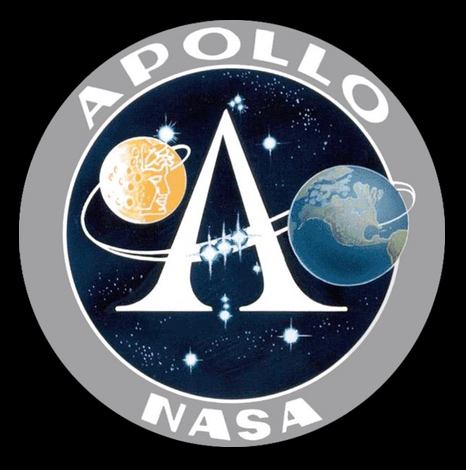
- The Orion constellation is centrally depicted in the middle of the insignia, resonating with the LHC "Orion stargate" code
- Orion represents Osiris the god of the underworld; the name "Apollo" is associated with a "bottomless pit" (underworld) via Apollyon/Abaddon in the Book of Revelation 9:11
Revelation 9:11 And they had a king over them, which is the angel of the bottomless pit, whose name in the Hebrew tongue is Abaddon, but in the Greek tongue hath his name Apollyon.
After finding this many correlations, our next logical step is to check for any visual overlay interaction between the Apollo program insignia, which is circular, and the LHC/solar system/Orion Belt Stars diagram we've been working with.
For starters, here is a straightforward overlay arrangement:

Not much happening… except the Moon and the SPS actually appear identical in size. We can check this by putting the two together…

As you can see, they are the exact same size. The SPS representing the Moon matching the size of the Moon… making perfect sense.
But why did we have to move the Apollo insignia for this? It's curious and seems a bit clumsy because the rearrangement didn't result in any other additional alignments. We need to investigate this a little further…
Keeping the Moon snugly inside the SPS, let us now rotate the insignia 180 degrees, i.e. we turn it upside down, like this:
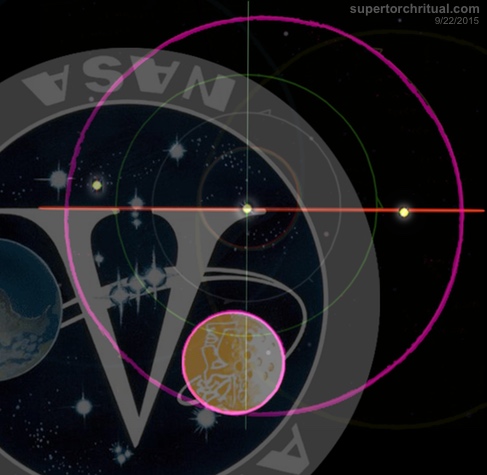
There it is, an unmistakable alignment! The flat feet of the big letter "A" now rest precisely on the solar system's equinoctial axis (red)!
At this point we have little reason to doubt we are dealing with a real hidden design here and not some happy coincidence. The following further confirms the reality of what we are uncovering…
Apollo 11 had its own insignia…

Let's bring together the two insignias (they are sized so that the inner edges of the circles match perfectly):
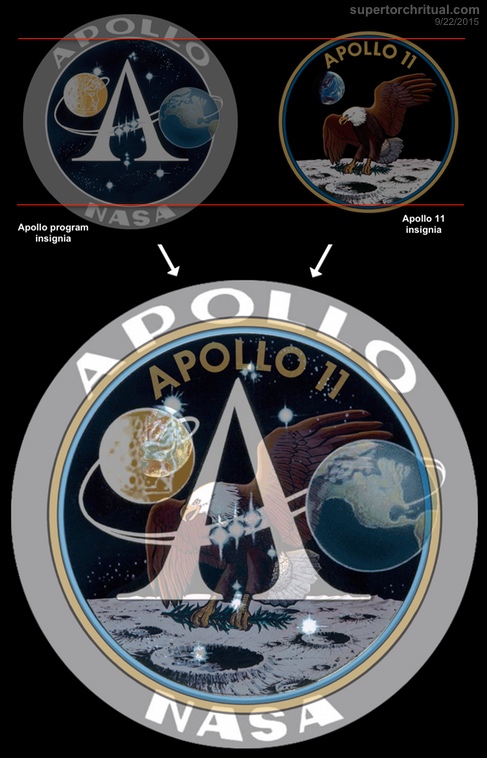
It's unmistakable: The same letter "A" stands tall like a pyramid right on the surface of the Moon!
The "pyramid" allusion here is no accident either.
There is this…
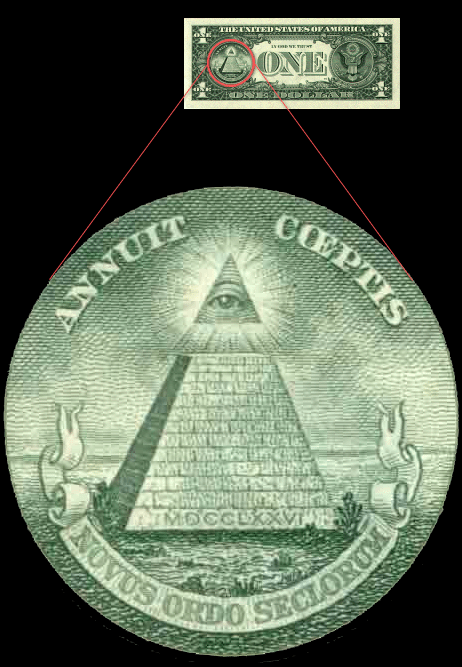
 
And there is also the Orion Correlation Theory: The Apollo insignia displays Orion and the Correlation Theory identifies Orion with the pyramids.

The Orion Correlation Theory emerged in the 1990s. The Apollo program was active back in the 1960s…
Somebody knew back then.
Both the Apollo program and CERN's LHC were enormous undertakings carried out by mankind to boldly go where no man has gone before. And we now see that they mysteriously interact with each other, whispering "Orion Stargate".
In Closing
So there you have it. I am confident I have provided enough compelling evidence to establish that CERN's Large Hadron Collider has a secret side that appears to be fully celestial in nature, ultimately pointing its ethereal finger to the Moon and Orion, as well as Mars.
Is the LHC a "Gate of the God", a "Tower of Babel", symbolically or literally connecting "heaven and earth"? Is it an "Orion Stargate" blueprint that can, if sufficiently decode, help us become a more inter-dimensional civilization?
And just who is behind the LHC secret design?
I don't have all the answers. It's all still very mysterious. The new revelations in this article, however, should serve as a major breakthrough paving the way for further investigation that will leads us to more stunning discoveries and more concrete answers to the big questions.
As always, if you are intrigued and would like to keep up with the latest, cutting-edge multicontextual discoveries (remember, a lot of the findings in this article are from my investigation all the way back in 2008-2010), consider joining STRUG (Super Torch Ritual Underground, our subscriber section), where information moves faster than the speed of light. Please also help us out by spreading the word. (If this article is met with silence, I might stop posting major public/free/Etemenanki articles.)
https://www.supertorchritual.com/underground/articles/CERN_Orion_Stargate.html |
|
|
|
|
La Madeleine
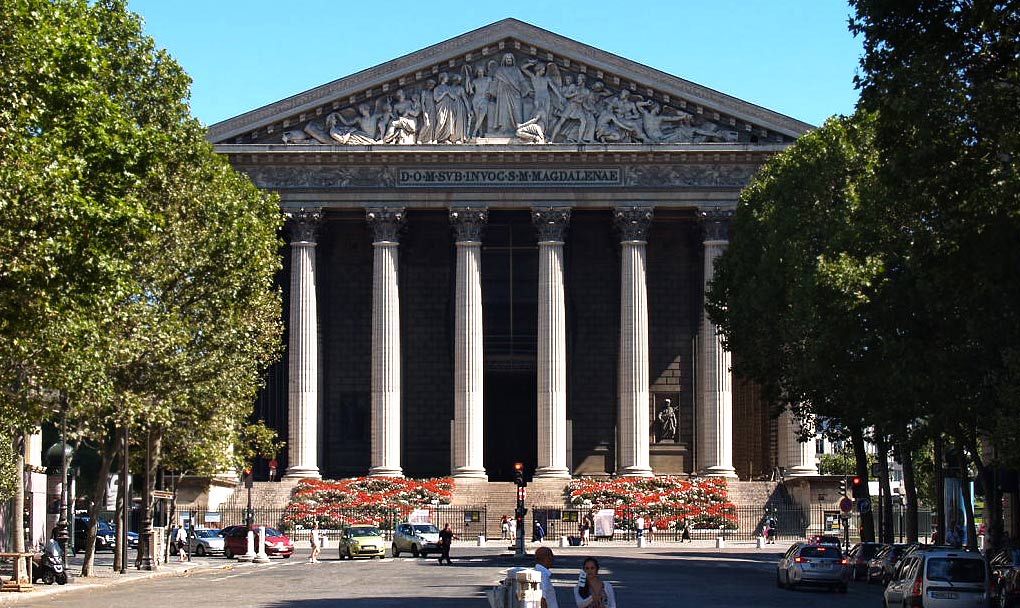
Foto: joz
Para ser una iglesia, la Madeleine tiene sin duda una forma extraña, pues parece más bien un templo de la antigua Roma. La explicación hay que buscarla en la turbulenta historia de París en los años que rodean a la Revolución Francesa.
Historia del monumento
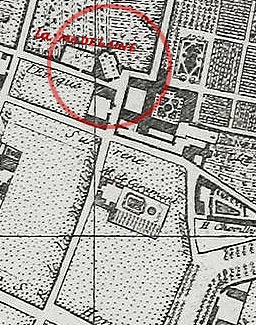
La antigua Madeleine
Antes de que esta zona de la ciudad quedara completamente alterada con la construcción de la enorme Plaza de la Concordia, existía en este lugar una pequeña iglesia de la Madeleine. Pero el diseño de la nueva plaza exigía una iglesia más grande, cerrando la perspectiva de la "Calle Real", que conducía hasta ella.
Cuando estalló la Revolución Francesa, la iglesia se encontraba todavía a medio construir, e inmediatamente se detuvieron las obras.
Pasado el periodo revolucionario, Napoleón quiso convertir la iglesia inacabada en un templo pagano, dedicado a la gloria del Gran Ejército, la Grande Armée. Para ello, derribó todo lo construido hasta entonces, y comenzó a levantarse el edificio que hoy contemplamos.
Pero finalmente, viendo que su efímero Imperio se derrumbaba, decidió que el edificio, ya muy avanzado, volviera a su uso original como iglesia.
Exterior del monumento
La Madeleine tiene la forma de un templo "periptero", es decir, rodeado de columnas por sus cuatro costados, como los templos griegos. Y posee las mismas dimensiones que el mayor templo de la antigua Grecia: el de Zeus Olímpico de Atenas.
Los elementos más destacados en el exterior de La Madeleine son:
1. El frontón
Fue construido después de la Restauración borbónica, en tiempos de Luis Felipe de Orleans, el "rey ciudadano". Aunque Luis Felipe había sido partidario de la Revolución, quiso que la imagen de este gran frontón tuviera un espíritu de conciliación. Por eso permitió que apareciera en él María Magdalena arrodillada ante Jesucristo Juez, como una alegoría de la Francia arrepentida, que suplica perdón por la ejecución de Luis XVI.
En efecto, a pocos pasos de esta iglesia, en la Plaza de la Concordia, había tenido lugar, el 21 de enero de 1792, la muerte del rey en la guillotina.
2. Puertas de bronce
Las puertas de entrada al templo son uno de los elementos más impresionantes de esta iglesia, por sus colosales dimensiones y por la fuerza de sus relieves.
Fueron realizadas por el barón Henri de Triqueti y representan "Los diez mandamientos". Los dos primeros se encuentran en el panel horizontal de la parte superior, y los otros 8 en las hojas de las puertas.
Estos son los mandamientos, y las escenas que los representan. Todas ellas están tomadas del Antiguo Testamento y tienen gran fuerza expresiva.
- "No tendrás otros dioses fuera de mí". Escena que lo ilustra: el pueblo judío recibe las tablas de la Ley.
- "No invocarás en vano el nombre de Dios". El pueblo judío ante Moisés.
- "Santificarás las fiestas". Dios descansa el séptimo día.
- "Honra a tu padre y a tu madre". Noé maldice al hizo que se burló de él.
- "No matarás". Caín es castigado por la muerte de su hermano.
- "No cometerás adulterio". El profeta Natán recrimina al rey David.
- "No robarás". Josué dictando sentencia por un robo.
- "No levantarás falso testimonio". Daniel defiende a la casta Susana ante la acusación injusta.
- "No codiciarás la mujer de tu prójimo". Dios rescata a Sara, la mujer de Abraham.
- "No codiciarás la casa de tu prójimo". Elías recrimina al rey Acab por codiciar la viña de Nabot, y darle muerte.
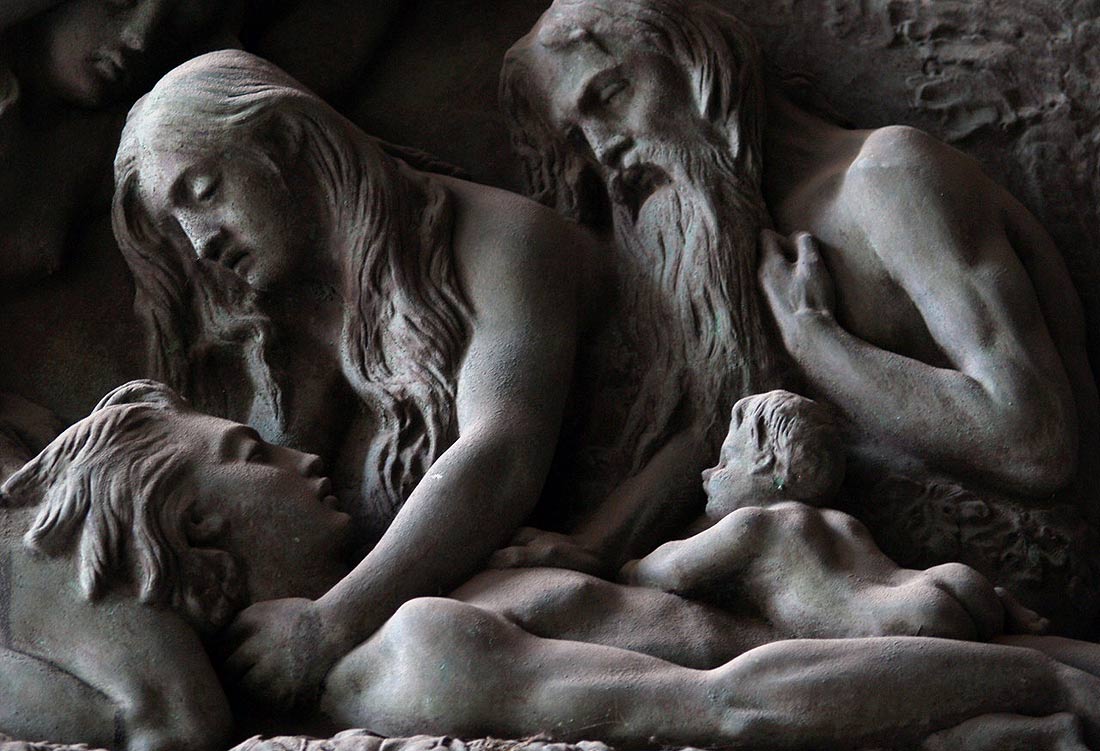
Detalle del 5º mandamiento. Abel yace en tierra tras ser asesinado por Caín. Foto: joz
Visita al interior
Si el exterior de La Madeleine parece un templo pagano de la Antigüedad, el interior se organiza como unas termas, con gran profusión de mármoles de colores.
Su mayor defecto es la escasa luz natural, que deja a la iglesia habitualmente en semipenumbra.
El techo se cierra mediante bóvedas rebajadas, adornadas con casetones y con un gran óculo en el centro, inspiradas en el Panteón de Roma.
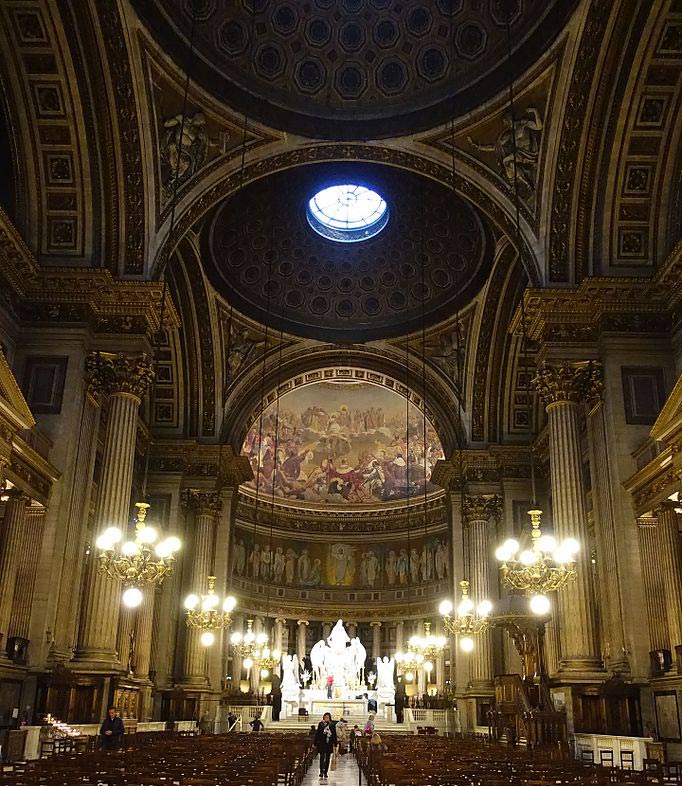
Foto: Guilhem Vellut (recorte)
La iglesia está llena de esculturas realizadas por artistas que fueron los mejores en su momento. El gobierno de Luis Felipe de Orleans puso gran cuidado la decoración de esta iglesia, que debía ser "El Remplo de la Reconciliación nacional", tras las convulsiones de la Revolución Francesa y del Imperio. Por eso destinó a La Madeleine grandes cantidades de recursos.
Las piezas más vistosas son:
- El gran grupo escultórico sobre el altar principal, obra de Charles Marochetti. Se llama "El arrebato de María Magdalena", a la que muestra en éxtasis, en el momento de ser arrebatada al cielo, transportada en una canastilla por ángeles de enormes alas.
-
El enorme fresco de Jules-Claude Ziegler, en el casquete del ábside. En él aparecen representados personajes de la Iglesia, de todas las épocas y culturas. La escena central representa a Cristo, que acoge y perdona a María Magdalena (alegoría de Francia arrepentida, como en el relieve del frontón).
Una banda a los pies de la santa explica el motivo: dilexit multum, amó mucho.
En el fresco aparece también la figura de Napoleón Bonaparte, que en ese momento acababa de fallecer y era extraordinariamente popular en Francia. Clica en la imagen para verlo.
LINKS ÚTILES
https://www.guiapracticaparis.com/la-madeleine.php |
|
|
|
|
From Venite Prandete
Tradition tells us that amongst the treasures of the Church entrusted to St. Lawrence was the Holy Grail, the chalice used by Our Lord at the Last Supper.

Valencia’s sacred chalice
To protect this precious relic from the prefect of Rome, St. Lawrence entrusted it to a friend, the Spanish soldier Proselius, whom he knew would travel back to Huesca and asked him to give it to his parents for safe keeping.
In turn, St. Lawrence’s family sent the Holy Chalice to the monastery of San Juan de la Peña (north of Huesca) for preservation and veneration. In 1399, the relic was handed over to the King of Aragon, Martin “The Human” who kept it in the Royal Palace of Zaragoza and then in the Royal Palace of Barcelona in 1410 when he died.
Towards 1424, his successor King Alfonso the Magnanimous kept it in the Valencia Palace. Because of his stay in Naples, it was given with the rest of the royal relics to the Valencia Cathedral in 1437.
Since the 15th century, the Holy Grail has been kept and venerated in the Cathedral of Valencia and it was carried during the procession of Holy Thursday up to the 18th century. During the Napoleonic Wars, between 1809 and 1813, the chalice was taken to Alicante, Ibiza and Palma de Mallorca, escaping from Napoleonic invaders. During the Spanish Civil War (1936-1939), it was hidden in the city of Carlet, south of Valencia.
Today, traditions tell us the Holy Grail is located and venerated in a special chapel in the cathedral of Valencia in Spain.’
***
ST LAWRENCE
FEAST DAY 10th AUGUST
The authors of The Bad Catholics Guide to Good Living (1) tell us, of St Lawrence:
“This early Church administrator is known both for his courage and his snarky sense of humour. When the increasingly intolerant Roman government demanded that Lawrence collect all the supposed wealth of the persecuted underground Church, St Lawrence distributed all the wealth to the poor, then gathered the widows, orphans, beggars, cripples and lepers who lived on Catholic charity and presented them to the emperor saying: “Here are the treasures of the Church.”
Charmed by his wit, Valerian condemned Lawrence to be slowly, agonisingly burned to death over a grill.
As the Roman guards stoked the fires, Lawrence displayed the power of grace, and his irresistible comic timing, by telling the Romans: “I am done on this side, you may turn me over.”
Infuriated, they did just that (neglecting to baste).
As he breathed his last, Lawrence whispered: “I am done, now you may eat.”
The history above is recorded by St Ambrose – St Lawrence was one of the seven deacons of Rome under Pope Sixtus II, who was also martyred a few days prior to the martyrdom of St Lawrence. Both of these illustrious names form part of the Invocation of the Saints in the Canon of the Mass as Martyrs of the early Church, now in heaven, together with the other six deacons and Pope St. Sixtus II who had preceded him in martyrdom.
Several senators who were present at his death were so powerfully moved by his heroic fortitude and piety that they became Christians on the spot.
These noblemen took the martyr’s body and gave it an honorable burial in the Veran field, near the road to Tivoli, on the 10th of August, 258.
Within 50 years of his martyrdom, the Christian Emperor Constantine had a patriarchal church built over his tomb, the site now known as the Basilica of St. Lawrence-Outside-the-Walls, (San Lorenzo Fuori Le Mura), where his relics can be venerated today.
The Catholic Church has declared him to be the Patron Saint of chefs, and his feast day is traditionally celebrated by a grill or a barbecue.
(1) John Zmirak & Denise Matychowiak, Crossroad, New York, (2005), at p. 119.
https://catholicismpure.wordpress.com/2023/08/11/st-lawrence-and-the-holy-grail/ |
|
|
|
|
Like earlier pointed out, 'great star', 'burn', and 'seven' relate to Sirius. Now we can associate the "great star" with the Place Charles de Gaulle (Arc de Triomphe + the surrounding circular "square") since it was originally called the Place d'Etoile or 'Square of the Star', further linking the two quatrains II-41 and II-48.
From a slightly different angle, the fragments of Comet SL-9 'burned' Jupiter for about '7 days' in July 1994 and caught the attention of the world. The dates of this 'light show' were July 16~22 which roughly coincides with one of the key 'Sirius dates', July 20, mentioned earlier. Moreover, the dates July 16~22 very closely matches the dates of the historic Apollo 11 mission - first ever manned landing on the Moon - which were July 16~24 (and the landing occurred on the key date, July 20). This is meaningful especially when you consider the fact that Apollo the sun god could be identified with Horus the sun god (the son of Isis, and earlier associated with Sirius and Mars). Recall also that July 20 was associated with the 'flood' (of the Nile) in conjunction with Sirius. In Greco-Roman mythology, the god who causes the Flood to punish mankind is Jupiter - the very planet Comet SL-9 crashed into. And Jupiter was mythologically associated with the 'eagle' - the very name of the spacecraft that landed on the moon on that exact flood/Sirius date, July 20 (1969)!
|
|
|
|
|
LINE 4: "Their head hung with thread of 'polemars'
LINE 1: "The great star will burn for seven days"
LINE 2: "The cloud will make double sun appear"
LINE 3: "The large mastiff will howl all night"
"The mastiff that will howl all night refers to a secret branch of the priesthood in the Catholic Church that no one knows about except a few high priest members. This secret branch of the priesthood is like a private army, and the commander-in-chief is the pope. Their job is to fight for the church if the need should arise, similar to the way the Jesuits used to be the soldiers of Christ."
LINE 4: "When the great pontiff changes his abode"
LINE 1: "The great star will burn for seven days"
LINE 2: "The cloud will make double sun appear"
LINE 3: "The large mastiff will howl all night"
The "double sun" of Line 2 also correlates with Sirius A and Sirius B orbiting around each other. And the "mastiff" of course relates to Sirius the 'Dog Star'! I mean, this quatrain is screaming "Sirius!".
And II-48... Line 2 is enough to suggests the whole 'Sirius complex' - 'Saturn', 'Arc', and 'Mars'. But the most striking thing about quatrain II-48 is its correlation with Paris - which is of course part of the Sirius complex - and more specifically with the 'Elysian Fields' region of Paris where the Arc de Triomphe stands. (The connection is so striking that I feel this one should be called 'the Paris quatrain'.) This issue was discussed in Chapter 7 of 'The Elysian Fields' but let me go through it here again with some new additional interpretations:
The "great army" is precisely the name of one of the 12 streets that extend from the famous circular road that surrounds the Arc de Triomphe ("Place Charles de Gaulle"), which is called in French, " Grande Armee". 'Grand Armee' is not only one of the 12 streets but it's the direct extension of the main street, 'Champs Elysees' (Elysian Fields). The "mountains" is likely an allusion to the Arc de Triomphe which stands in between 'Champs Elysees' and 'Grande Armee' Here are pictures showing the relevant region of Paris and the relationship of the Grande Armee avenue, Arc de Triomphe, and the Elysian Fields.
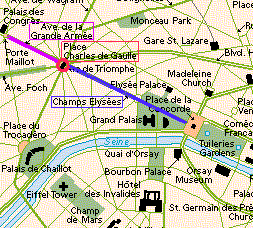
· Red region = Arc de Triomphe & Place Charles de Gaulle
· Purple street = Grande Armee avenue
· Blue street = Elysian Fields
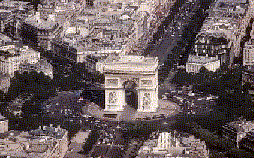 The "Arc" is obviously a reference to the' Arc de Triomphe'. And the notion is strengthened by the word right after "Arc", "turning" - which implies circular movement/shape and nicely corresponds to the famous circular road going around the Arc de Triomphe (see the picture at right). The phrase "Saturn in the Arc" corroborates the Saturn-ark connection we've made.
The latter half, "turning/corner of the fish Mars" can be interpreted in a quite different and symbolic way, and it is necessary to use a map of the relevant region of Paris again:
 As you can see, the Elysian Fields, the Arc de Triomphe etc. are placed right beside the Seine River. Interestingly, on the other side of the river, there is a garden called the " Field of Mars" ('Champ de Mars') in which stands Paris' landmark, the Eiffel Tower. This is reinforcing the relevance of Mars. Now, the word 'Seine' (name the river) means "fishing net". That metaphorically makes (the Field of) Mars the " fish" trapped in the net. This would also make the same region where the river is turning 90 degrees the " corner of the 'fish-Mars'" to fit Line 2.
The "fish" also correlates with Sirius because the Dogon tradition tells us that the "Nommos" that supposedly came from the Sirius system were fish-like (and yes, we're now getting into the issue of extraterrestrial intelligence). So the phrase 'fish Mars' again associates Sirius with Mars.
The very first word, "poison", creates an interesting connection with Line 2 because the French word for "fish" is "poisson" which is nearly identical, both in spelling and pronunciation, to the word 'poison' which is also a French word for poison. Thus, combined with the last word of the line "salmon", the notion of 'fish' seems to be emphasized. Interestingly, the original French word used for 'poison' was actually 'Venins' which resembles Venus. It seems relevant, therefore, that Venus goes retrograde (i.e. reversing its apparent movement in the sky) during the key period of August 1999, corresponding to "salmon" (which is known to swim against the current) of the same line and also to the previous line's expression, "turning of the fish".  This last line of the quatrain strongly reinforces the concepts put forward by the interpretation of the previous lines. The last word of the line "polemars" is not a real word, most likely it's a made-up word / anagram. Decoding is not that difficult - first we'll divide it into two words, ' pole' and ' Mars'. Continued from previous interpretations, it is not hard to see that the "pole" would refer to the 'Eiffel Tower' that stands in the' Field of Mars'.
To decipher the whole line, we need to take a closer look at the map of the region of the 'Field of Mars':
 Notice that the park, the Field of Mars ("Champ de Mars"), seemingly crosses over the river. The Seine River can be viewed as dividing the park and there is a bridge connecting the two parts. Since the park area can be viewed metaphorically as "fish" based on previous interpretations, notice how the park left of the river can be viewed as the "head" of the fish barely 'hanging on' to the body, the Field of Mars, by the bridge or the "thread" from "polemars" / the Field of Mars. Thus it would fit Line 4. Notice that the park, the Field of Mars ("Champ de Mars"), seemingly crosses over the river. The Seine River can be viewed as dividing the park and there is a bridge connecting the two parts. Since the park area can be viewed metaphorically as "fish" based on previous interpretations, notice how the park left of the river can be viewed as the "head" of the fish barely 'hanging on' to the body, the Field of Mars, by the bridge or the "thread" from "polemars" / the Field of Mars. Thus it would fit Line 4.
Also, since the French word "fil", which I translated here as "thread", could also mean 'stream', the line could also interpreted like this: "Their head hung by the stream of the Field of Mars". This would still be metaphorically describing how the Seine River is dividing the Field of Mars and its "head".
And that's basically how Quatrain II-48 relates to Paris (and through which to the 'Sirius/ark complex')... but there is one last thing to add to all this. And this is my favorite part :) Well, we've looked at every line of the quatrain, so what's left? Ah, yes we left out the number of the quatrain 2 and 48. Why, of course, those numbers are the coordinates of Paris (Paris: 2.3 deg. E & 48.8 deg. N)!
Now let's shift our focus back to II-41 and do more in-depth study:
Century II - 41
The great star will burn for seven days,
The cloud will make double sun appear:
The large mastiff will howl all night
When the great pontiff changes his abode.
Like earlier pointed out, 'great star', 'burn', and 'seven' relate to Sirius. Now we can associate the "great star" with the Place Charles de Gaulle (Arc de Triomphe + the surrounding circular "square") since it was originally called the Place d'Etoile or 'Square of the Star', further linking the two quatrains II-41 and II-48.
From a slightly different angle, the fragments of Comet SL-9 'burned' Jupiter for about '7 days' in July 1994 and caught the attention of the world. The dates of this 'light show' were July 16~22 which roughly coincides with one of the key 'Sirius dates', July 20, mentioned earlier. Moreover, the dates July 16~22 very closely matches the dates of the historic Apollo 11 mission - first ever manned landing on the Moon - which were July 16~24 (and the landing occurred on the key date, July 20). This is meaningful especially when you consider the fact that Apollo the sun god could be identified with Horus the sun god (the son of Isis, and earlier associated with Sirius and Mars). Recall also that July 20 was associated with the 'flood' (of the Nile) in conjunction with Sirius. In Greco-Roman mythology, the god who causes the Flood to punish mankind is Jupiter - the very planet Comet SL-9 crashed into. And Jupiter was mythologically associated with the 'eagle' - the very name of the spacecraft that landed on the moon on that exact flood/Sirius date, July 20 (1969)!
So, in various ways Line 1 corresponds to the Sirius complex.
Besides the 'double sun' reference to Sirius, this line still continues the allusion to the Jupiter-Comet SL-9 collision - the 'cloud' of the fragmented comet colliding with Jupiter to produce a great light show (becoming the 'second sun'). As previously stated, the "mastiff" alludes to Sirius the 'Dog Star'. But a new interpretation can be derived from this line when combined with the 'hypnotic interpretation' by 'Brenda' of this line presented in Dolores Cannon's 'Conversations With Nostradamus' material:
I must say that this sounds like it may relate to the Knights Templar after whose tradition the Jesuits are structured. This would be very congruent since the Templars are intimately associated with the ark/Grail and so also naturally with Sirius the 'Dog Star'. And the CWN hypnotic interpretation and my own converge nicely.
On another level of interpretation, the "private army" of the pope could be in reference to a military corps known as the Swiss Guard that the Vatican maintains and whose function is to protect the pope and his personal residence. Remarkably, here we again see a Switzerland connection (in the name). Remember that Switzerland has been linked with the Templars and the 'ark' earlier. But it gets even more interesting: it turns out that King Louis XIII of France also had a body of soldiers called Swiss Guards to protect him. But they all died on August 10, 1792 during the French Revolution while defending the royal palace in Paris. So, we meet Paris again. The date August 10 is intriguing too as it is only one day before a total eclipse over Europe (Aug. 11, 1999). And it is said (I haven't really checked) that the 'eclipse zone' passes exactly at Paris in the midday! Paris again... I feel there will be a 'resonance' of the demise of King Louis XIII's Swiss Guards manifested around that time. This likely correlates with the sudden dissolution of the Knights Templar on Oct. 13, 1307, when they were betrayed by the pope at the time. And here comes the last line of the quatrain...
Notice that this line shifts the focus from Sirius to the issue of the Church completely, even though the foregoing interpretations made this transition very smooth. And this line is relatively straightforward. The implication is that we may see the Church in upheaval in the summer/fall of 1999.
Incredibly, if we go back to Line 2, it appears to describe the nature of the upheaval in more detail:
LINE 2: "The cloud will make double sun appear"
This now can be interpreted to be referring to the next pope election. To see the connection, we need to first look at the process of the election. The most common way to elect a pope is by ballot. By lot, the cardinals choose from their group three who collect the ballots of the infirm, three who counts the votes and three reviewers of the results. Two votes are taken every morning and two every afternoon until a two-thirds plus one majority is obtained. The crowd in St. Peter's Square follow the bolloting by watching the smoke that comes from the chimney on the palace roof. The smoke is from burning all the ballots. If the necessary majority is not reached, the ballots are burned in a way that creates black smoke. When the majority is reached, the ballots are burned in a manner that creates white smoke to signal the election. need to first look at the process of the election. The most common way to elect a pope is by ballot. By lot, the cardinals choose from their group three who collect the ballots of the infirm, three who counts the votes and three reviewers of the results. Two votes are taken every morning and two every afternoon until a two-thirds plus one majority is obtained. The crowd in St. Peter's Square follow the bolloting by watching the smoke that comes from the chimney on the palace roof. The smoke is from burning all the ballots. If the necessary majority is not reached, the ballots are burned in a way that creates black smoke. When the majority is reached, the ballots are burned in a manner that creates white smoke to signal the election.
Now, the word Nostradamus used for "cloud" was 'nuee' which actually implies a big/black cloud rather than a nice/white cloud. Therefore a more fitting translation would be:
"Black cloud will make double sun appear"
Next, the "sun" appearing is symbolic of the successor to Pope John Paul II, because he is the 'pope of the solar eclipse' (JPII was born during a solar eclipse May 18, 1920; and he was given the name "De labore Solis" - 'of the eclipse of the sun' - by St. Malachy, an Irish bishop who visited Rome in 1139 and supposedly had a prophetic vision in which he saw all the popes that would sit in St. Peter's Chair. And he identified the future popes by two-word Latin mottoes which correspond to the most striking events of their reign or by their coat-of-arms. They appear to be surprisingly accurate). I don't think I need to point out its relevance to the solar eclipse of Aug. 11, '99. So, continuing, the 'sun appearing' would metaphorically refer to the pope who follows the 'eclipse pope', John Paul II.
But the line says there would be 'two' suns. When combined with the "black cloud" part (which means unsuccessful vote), it's not that difficult to derive the meaning of the whole line; it would refer to a situation of 'pope vs. antipope' (i.e. one elected or claiming to be pope in opposition to the pope canonically chosen). And the indications are that those two 'popes' will be the last popes. At least there are no more popes after them in Malachy's prophetic list of popes. Perhaps it could be viewed that the dissolution of the Church is to begin in the summer/fall of 1999 with the next election.
Remarkably, it turns out, this Church issue is applicable to the other quatrain, II-48, and especially its second line:
LINE 2: "Saturn in the Arc turning from the fish Mars"
As mentioned earlier, the "Arc" can be applied to the Alps which forms a big nice arc at the northern end of Italy. And "the fish Mars" symbolically allude to the cardinals (from whom a pope is elected), because the cardinals wear a red dress and a red cap, the color of Mars; and St. Peter, the first pope, was a fisherman - and the role of a pope is referred to as a "fisher of men". Now, coincidentally, one of the cardinals considered likely to succeed Pope John Paul II, Cardinal Carlo Martini, is the archbishop of Milan, Italy which happens to be located right inside the Alps' "arc" at the northern edge of Italy. This suggest that Cardinal Milan will be involved in the coming trouble of the papal election
Amazingly, the very same line alludes to another participant in the schism. The key is to interpret the "arc" as the arcs of latitude/longitude (which are indeed 'arcs' drawn on the surface of the planet). And it just happens that the long./lat. "arcs"/ 'coordinates', based on the quatrain # '2-48', corresponds to Paris as explained earlier; and Paris happens to be the location of Cardinal Jean-Marie Lustiger, the archbishop of Paris, who is also regarded as a very strong candidate to succeed John Paul II! Cardinal Lustiger is also a Jew (but believes Jesus was the savior), which is interesting because the prophetic motto St. Malachy gave to the next pope is "Glory of the Olive (Tree)" and the olive tree is a common Roman symbol for Jedea/Palestine. Furthermore, this Christian-Jew mix can be compared to the "fish Mars" from the same line of II-48 because it can be taken to mean 'Pisces Aries' which corresponds to Christianity and Judaism. (Jesus represents the beginning of the Age of Pisces and Moses signified the Age of Aries.)
So, we seem to have found the candidates for the next two popes who will be involved in the destruction of the Church. The reason why "Saturn" ("in the Arc") would correspond to both Cardinal Martini and Cardinal Lustiger since both can be viewed to be "in the Arc" as we've just seen is perhaps because they together bring about the end of an era, or time, just as Saturn represents 'Time the destroyer'.
This concludes the discussion on the Church matter, but let us take another look at II-41 and interpret them on a different level.
First, let me mention that the hypnotic interpretations of the CWN material indicates that II-41 and II-48 relate to a "light display" associated with extraterrestrial intelligence (!). Looking at Line 1~3 of II-41, I can't help but theorize that this "light display" would have to do with Sirius:
Those lines just strike me as collectively describing how Sirius will be ' screaming' in the sky. It correlates strongly with X-72's second line " From the sky will come a great King of terror/appeasing King" (the "appeasing King" => Jason of the Argo/ark => Sirius). Of course there are many ways Sirius can "howl" (metaphorically), but let me present some especially intriguing possibilities.
Consider the following: Sirius was called the 'Arrow star', and the Sanskrit word for 'an arrow, 'ishu', also means 'ray of light', and the Dogon tradition tells us that the ray of Digitaria (i.e. Sirius B) sweeps the Earth once a year. This imagery of an arrow-like ray of light that periodically 'sweeps' the Earth strongly reminds me of one particular type of star - a 'pulsar'. A 'pulsar' is a virtually dead star, a neutron star, that rotates rapidly and causes electromagnetic beams to be emitted like a lighthouse (i.e. rotating light beams). The unique thing about pulsars is that their light emission is focused into 'arrow-like' beams and not omni-directional like most light sources in the sky. Therefore, the visibility of a pulsar depends on the geometry involved between the pulsar and the observer. So it is possible that a pulsar that's been invisible to us for a long time suddenly appears in the sky due to some slow-shifting geometric relationship.
What I'm getting at, is that there may be a pulsar in the Sirius system that's about to be observable for us on Earth. And this would make the "double sun" of Sirius. But will it be Sirius B? I'm not sure. Sirius B is considered to be a 'white dwarf' and 'white dwarfs' are not known to develop into pulsars, so scientifically it's unlikely, but science is always revising itself so I won't rule out the possibility of some unknown mechanism that lets Sirius B become a pulsar.
But there is another possibility I'd like to mention here. It's 'emme ya'/'Sirius C' - claimed by the Dogon to exist but not yet confirmed by scientific observation. According to the Dogon tradition, this star "throws out two pairs of radii (beams)" and it's "the only star which emits these beams which have the quality of solar rays" ('Sirius Mystery', pp44-45). These descriptions remarkably match the characteristics of a pulsar! I mean, what other celestial bodies "throws pairs of... beams" besides pulsars? Furthermore, 'emme ya/Sirius C is called the 'sun of women', 'a little sun', and it is said to be accompanied by a satellite called the 'star of Women'. And this 'star of women' is represented by the sign of a 'cross', which correlates with the astrological 'grand cross' of Aug. 18, '99 (also the date for Cassini-earth 'crossing') and the cross of christianity, the Knights Templar, etc. - all relevant to Sirius.
So it seems possible that the 'light display' refers to the discovery/appearance of another star in the Sirius system (emme ya/Sirius C) which may be a pulsar.
If the Sirius "light display" of this kind and the Church schism are to occur, they will likely coincide with each other timing-wise. And the key period seems to be the summer/fall of 1999. Keep in mind, however, that those two are not the only projected events - for example, we have the Mars/Cydonia/Atlantis issues (still Sirius-related though). Notice that the quatrain # of II-41 we just looked at contains the Cydonia/NYC latitude number '41'.
Also, we're also likely to experience some unexpected events that will fit the quatrains and interpretations nicely - and we'll learn from it.
I guess that's it for now.
1999: Ark of Sirius (goroadachi.com) |
|
|
 Primer Primer
 Anterior
4 a 18 de 18
Siguiente Anterior
4 a 18 de 18
Siguiente
 Último
Último

|
|
| |
|
|
©2025 - Gabitos - Todos los derechos reservados | |
|
|


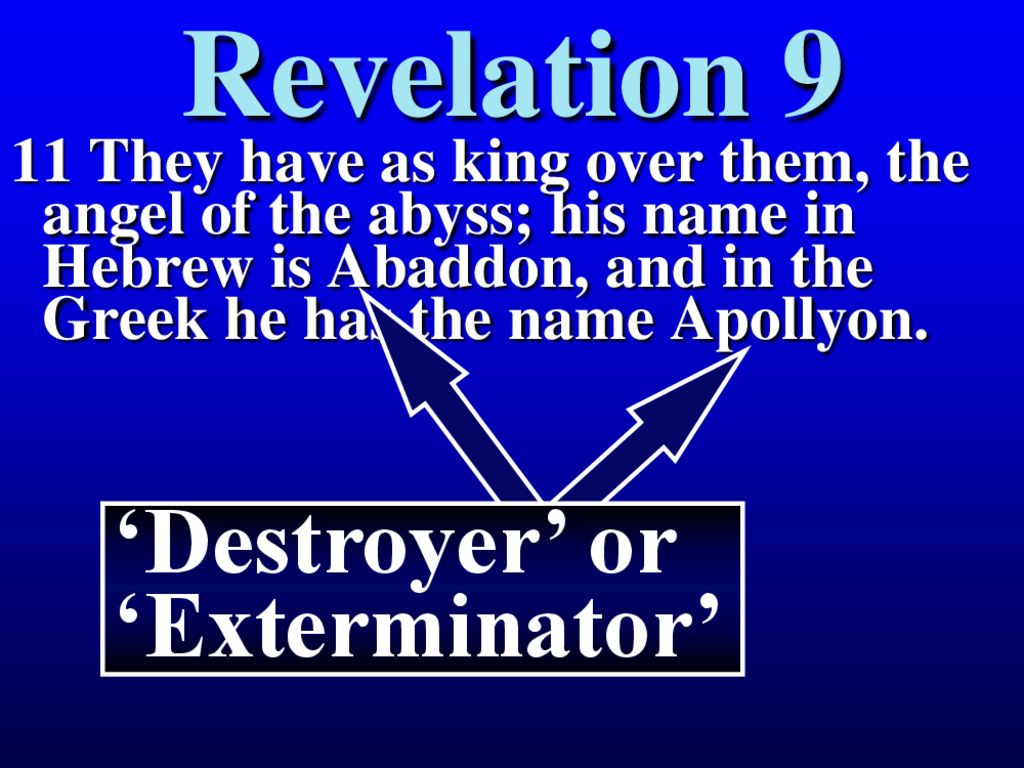





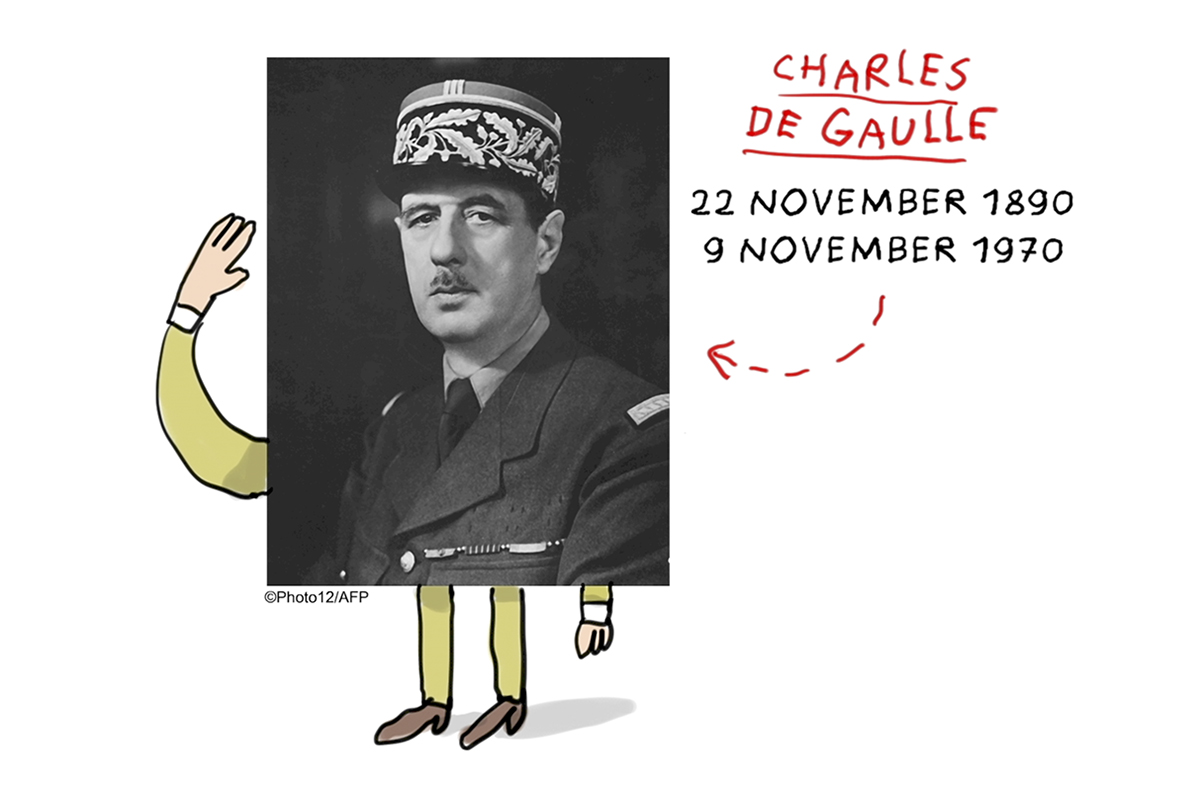
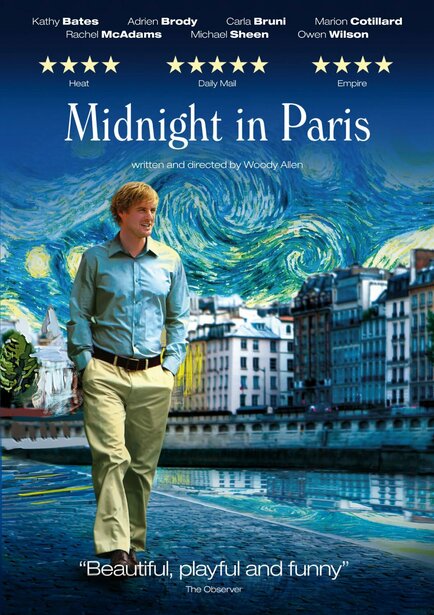




































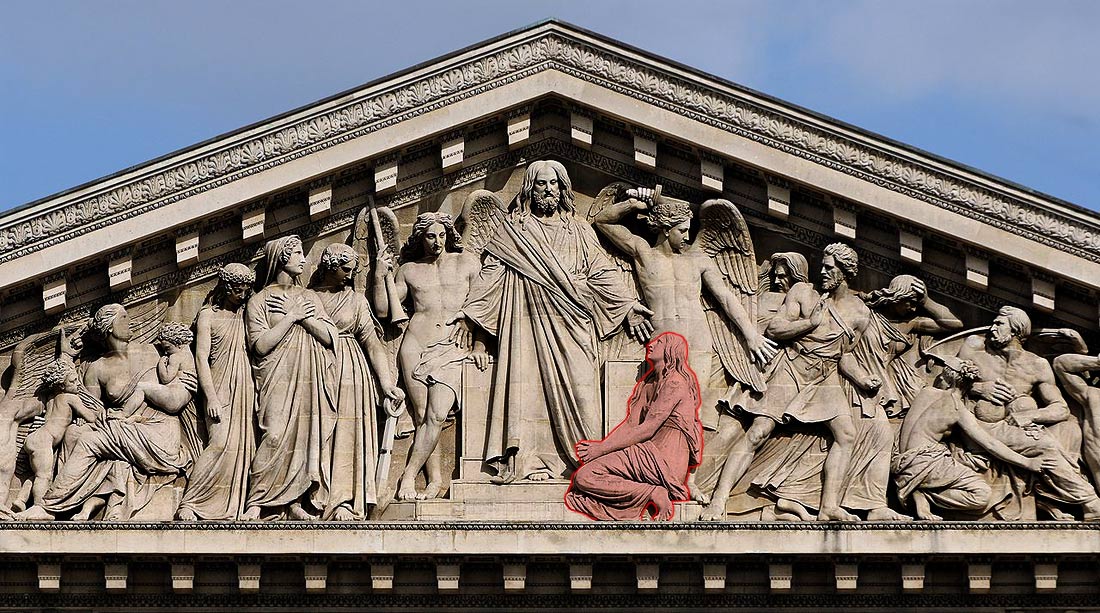
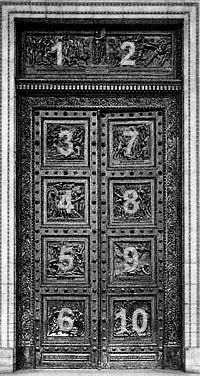







 This last line of the quatrain strongly reinforces the concepts put forward by the interpretation of the previous lines. The last word of the line "polemars" is not a real word, most likely it's a made-up word / anagram. Decoding is not that difficult - first we'll divide it into two words, 'pole' and 'Mars'. Continued from previous interpretations, it is not hard to see that the "pole" would refer to the 'Eiffel Tower' that stands in the' Field of Mars'.
This last line of the quatrain strongly reinforces the concepts put forward by the interpretation of the previous lines. The last word of the line "polemars" is not a real word, most likely it's a made-up word / anagram. Decoding is not that difficult - first we'll divide it into two words, 'pole' and 'Mars'. Continued from previous interpretations, it is not hard to see that the "pole" would refer to the 'Eiffel Tower' that stands in the' Field of Mars'.
 Notice that the park, the Field of Mars ("Champ de Mars"), seemingly crosses over the river. The Seine River can be viewed as dividing the park and there is a bridge connecting the two parts. Since the park area can be viewed metaphorically as "fish" based on previous interpretations, notice how the park left of the river can be viewed as the "head" of the fish barely 'hanging on' to the body, the Field of Mars, by the bridge or the "thread" from "polemars" / the Field of Mars. Thus it would fit Line 4.
Notice that the park, the Field of Mars ("Champ de Mars"), seemingly crosses over the river. The Seine River can be viewed as dividing the park and there is a bridge connecting the two parts. Since the park area can be viewed metaphorically as "fish" based on previous interpretations, notice how the park left of the river can be viewed as the "head" of the fish barely 'hanging on' to the body, the Field of Mars, by the bridge or the "thread" from "polemars" / the Field of Mars. Thus it would fit Line 4. need to first look at the process of the election. The most common way to elect a pope is by ballot. By lot, the cardinals choose from their group three who collect the ballots of the infirm, three who counts the votes and three reviewers of the results. Two votes are taken every morning and two every afternoon until a two-thirds plus one majority is obtained. The crowd in St. Peter's Square follow the bolloting by watching the smoke that comes from the chimney on the palace roof. The smoke is from burning all the ballots. If the necessary majority is not reached, the ballots are burned in a way that creates black smoke. When the majority is reached, the ballots are burned in a manner that creates white smoke to signal the election.
need to first look at the process of the election. The most common way to elect a pope is by ballot. By lot, the cardinals choose from their group three who collect the ballots of the infirm, three who counts the votes and three reviewers of the results. Two votes are taken every morning and two every afternoon until a two-thirds plus one majority is obtained. The crowd in St. Peter's Square follow the bolloting by watching the smoke that comes from the chimney on the palace roof. The smoke is from burning all the ballots. If the necessary majority is not reached, the ballots are burned in a way that creates black smoke. When the majority is reached, the ballots are burned in a manner that creates white smoke to signal the election.